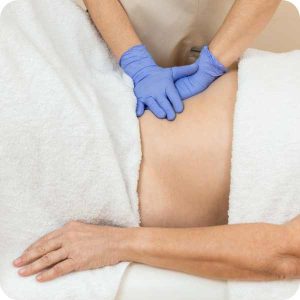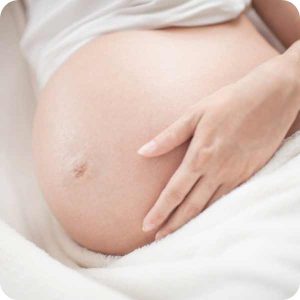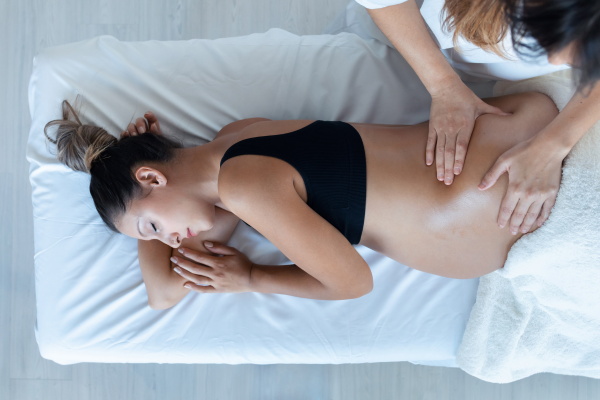 While awareness of the importance of physiotherapy after childbirth is gaining momentum, there are elements that are still widely overlooked. One of these is diastasis recti.
While awareness of the importance of physiotherapy after childbirth is gaining momentum, there are elements that are still widely overlooked. One of these is diastasis recti.
Diastasis recti is one of those terms that many of us are oblivious to, even after having kids: until, the ‘doming’ and general lack of strength in the abdominal area start to raise questions. Separation of muscles after pregnancy is more common than we think, but it’s not something we have to live with. Exercise and proper breathing while exercising can lead you on the path to sustainable recovery. In this article, women’s health physiotherapist Carolyn Sultana shares insight on diastasis recti, tips to prevent it, and ways to heal it. Check out our interview below to learn more.
 What is diastasis recti?
What is diastasis recti?
During pregnancy the abdomen makes room for the growing baby which means that the abdominal muscles have to stretch. Abdominal muscle separation is also called diastasis rectus abdominis (DRA). This occurs when the linea alba, which is connective tissue between the rectus abdominus muscles, separate more than “normal”. Once this happens, the woman will start noticing a bulging or doming appearance in the tummy.
100% of women will have abdominal separation by the end of pregnancy or immediately postpartum. A small abdominal separation that persists postpartum which does not bulge and still allows for good abdominal control is not of concern and this small separation will tend to close off in the first few weeks postpartum. However there are women who suffer larger separations (2 fingers or more) and who end up having their belly bulging in the middle, skin wrinkling around the area, and a feeling of weakness around the core area. This needs attention.
Are there ways to heal it?
The first important point is to be aware of what movements can make it worse, such as getting out of bed without turning on the side and incorrect lifting techniques. Sometimes ill-fitting baby wearing slings can also put undue pressure on the abdominal muscles.
There are situations where the physiotherapist will ask the new mum to get an abdominal binder to help in the rehabilitation but this is not always necessary and should only be used after consultation with the woman’s health physio.
The biggest piece of the puzzle to heal a diastasis is correct movement and exercise. Exercise will be specifically designed for the abdominal and pelvic floor muscles and starting slow and steady is always the best way. It is useless to go for complicated fancy exercises without getting the basics correct, such as abdominal muscle recruitment with correct breathing pattern.
 Are there ways to prevent it?
Are there ways to prevent it?
Diastasis recti is a natural separation and therefore most times cannot be prevented. However, there are certain movements that can make a diastasis worse, such as:
- sit up type motions when getting out of bed rather than rolling to the side and pushing with the hands
- constipation and straining on toilet
- heavy lifting during pregnancy
- crunches, sit ups or bilateral leg lifts during pregnancy
Are there any long term effects when it happens?
The biggest reason why women opt to get help to heal the diastasis is cosmetic, as separated abdominal muscles leave a bulging tummy. However a weak, separated abdominal wall needs to recover to be able to fully support the abdominal contents and minimise musculoskeletal discomforts. Some studies also suggest that diastasis can be linked to low back pain and pelvic floor weakness or incontinence.
Thank you for sharing so much helpful information, Carolyn!
 About Carolyn Sultana
About Carolyn Sultana
Carolyn Sultana is a Women’s & Men’s Health Physiotherapist. She specialises in antenatal and postnatal issues such as pelvic and low back pain, diastasis recti, exercise during pregnancy, return to exercise postpartum and management of scars, both after perineal tears or c-section scars. Pelvic floor physiotherapy is also important for people with pelvic organ prolapse, urinary or faecal incontinence, urgency or straining. Ms Sultana also specialises in the treatment of sexual pain and dysfunction related to issues with the pelvic floor muscles.
You can find her at St Anne’s Birkirkara, MyMama Naxxar, Willingness Ħaż Żebbug and Abela’s pharmacy in Gozo.



